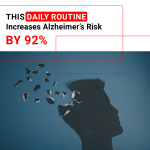Claim one week of free access to the MedCircle library to access hundreds of exclusive videos like this one: https://bit.ly/3vN0c8K
What is bipolar disorder? Double board-certified psychiatrist Dr. Dom Sportelli treats bipolar disorder regularly. He breaks down what you need to know in this video.
He also answers:
What is bipolar 1 disorder?
What is bipolar 2 disorder?
How are they different?
What do manic episodes look like?
What are the symptoms of mania?
What do hypomanic episodes look like?
What are the symptoms of hypomania?
Why are there misconceptions around the mood swings that accompany bipolar disorder?
How is bipolar depression different than major depression?
And more.
In addition to bipolar disorder, Dr. Dom treats a range of mental health conditions like schizophrenia, anxiety, depression, adhd, psychosis, and more. Watch more videos on mental illness at MedCircle.com.
#BipolarDisorder #MentalHealth #MedCircle

What is bipolar disorder? Bipolar disorder, sometimes known as manic depression, is a type of mental disorder where people experience periods of extreme lows, known as depression, as well as periods of extreme highs, or manic episodes. Find more videos at http://osms.it/more.
Hundreds of thousands of current & future clinicians learn by Osmosis. We have unparalleled tools and materials to prepare you to succeed in school, on board exams, and as a future clinician. Sign up for a free trial at http://osms.it/more.
Subscribe to our Youtube channel at http://osms.it/subscribe.
Get early access to our upcoming video releases, practice questions, giveaways, and more when you follow us on social media:
Facebook: http://osms.it/facebook
Twitter: http://osms.it/twitter
Instagram: http://osms.it/instagram
Our Vision: Everyone who cares for someone will learn by Osmosis.
Our Mission: To empower the world’s clinicians and caregivers with the best learning experience possible. Learn more here: http://osms.it/mission
Medical disclaimer: Knowledge Diffusion Inc (DBA Osmosis) does not provide medical advice. Osmosis and the content available on Osmosis’s properties (Osmosis.org, YouTube, and other channels) do not provide a diagnosis or other recommendation for treatment and are not a substitute for the professional judgment of a healthcare professional in diagnosis and treatment of any person or animal. The determination of the need for medical services and the types of healthcare to be provided to a patient are decisions that should be made only by a physician or other licensed health care provider. Always seek the advice of a physician or other qualified healthcare provider with any questions you have regarding a medical condition.
Video Rating: / 5






























































